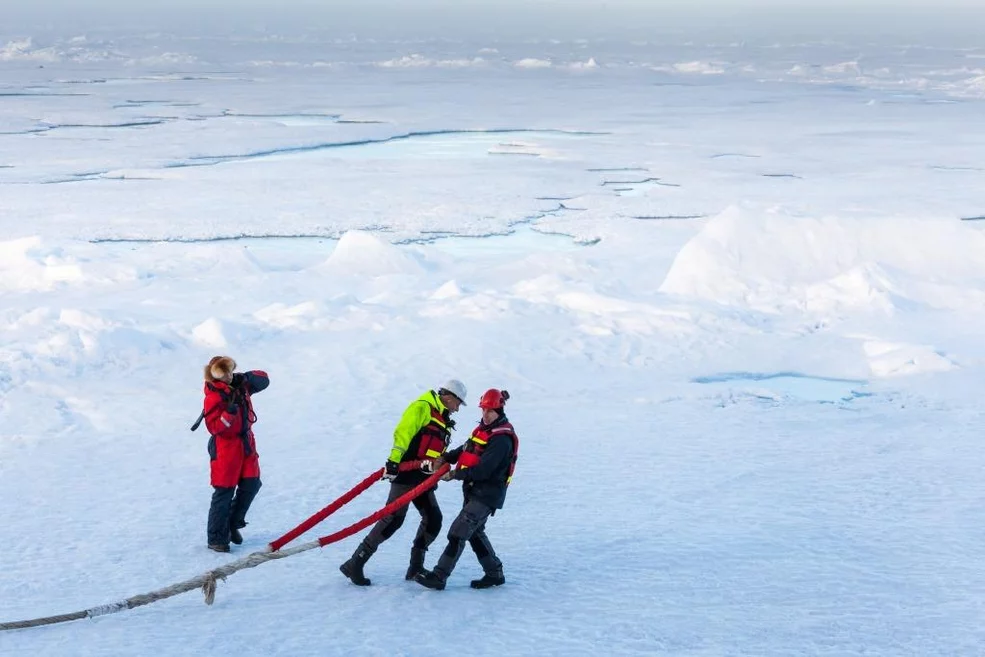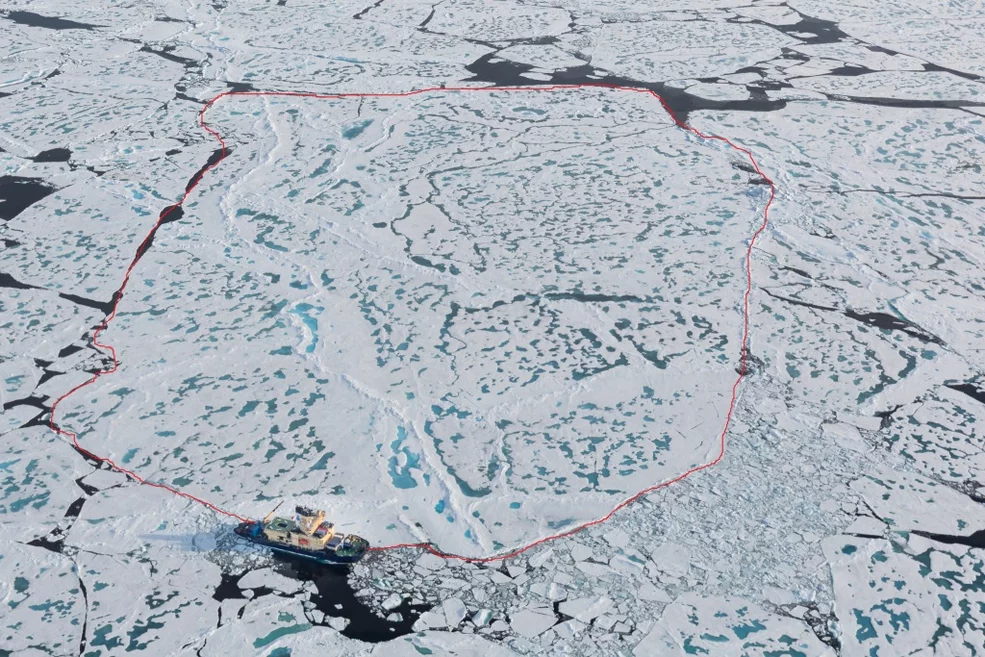Current position: 89° 34′ N, 22° 43′ O
One in a million
After the deserved celebrations for reaching the North Pole it is time to go back to work again. We need to look for a good ice floe on which we can moor the ship and start our 5 weeks long station. One would think that finding a good chunk of ice in the Arctic should be relatively easy, in particularly here where the great majority of the landscape is covered in white. Unfortunately this is not the case: the ice floe we are looking for has to match several criteria and the only way to identify it is to do visual surveys with the helicopters for which we need good visibility. A rare condition in the High Arctic.
The ice floe we are looking for has to be compact and without many cracks so that the Oden can be moored safely without breaking it apart. It should also be thick enough to handle the weight of all our equipment, helicopter and snow mobiles included (there are stories about snow mobiles “parked” permanently on the sea floor during previous expeditions after the breaking of the floe, so this is a serious concern). On the other hand, it shouldn’t be too thick, because some projects need to drill holes through it. For example the project led by Mario Hoppmann from the Alfred Wegener Institute will deploy a remotely operated vehicle (ROV) under the ice floe to measure sea-ice properties such as the spectrum of the transmitted solar light, sea-ice geometry and several other physical and biological properties in the water column. Another important requirement is to have enough open water around the floe; in particular we would like to have an open lead area far from the ship for undisturbed sampling of water and air. On the open lead Matt Salter from Stockholm University will deploy a floating aerosol chamber to measure primary aerosol production from open water. A mechanism that produces aerosols in sea-ice regions that has been hypothesized in previous studies, is bubble bursting without waves at the water surface. This link will be investigated by Helen Czerski from the University College London who will measure bubble size spectra in the water with a special camera and several other sensors. Additionally John Prytherch from the University of Stockholm will measure turbulent air-sea fluxes and a small catamaran will be operated by Brandy Robinson from the University of Oldenburg to collect samples of the sea surface microlayer, a very thin layer on the surface of the ocean, enriched in various biogenic organic species. Finally, we would also like to have a hot-tub on top of the floe with hot chocolate, Glühwein and a couple of polar bears for our postcard photos. With all these criteria to fulfill it is not an easy hunt: in the previous days a couple of good candidate floes were identified but now clear conditions and good visibility are required to make a final recognition with the helicopter. Unfortunately the weather is not collaborative and everyone is stuck on Oden without knowing when the operation will be able to start. Our project is among the lucky ones that sample continuously from the ship, so we are not very concerned but the stress and the anxiety of many other people can be felt: any day lost now is a day less of precious measurements! The apex is reached when the co-chief scientists decide to try a final recognition flight despite the low clouds and come back shortly afterwards because the visibility was so bad that they “could not even see the ship from 5 meters distance”. Being persistent is sometimes helpful and apparently the Weather was convinced that the crazy group of scientists on this blue-yellow ship was motivated enough for a 5 weeks ice camp in the High Arctic. Shortly after the helicopter came back, clouds disappeared and the visibility improved. With this sudden improvement of meteorological conditions the ice floe is soon identified and the ship can start moving again to reach its final destination.

Luckily the choice was good and the captain with very gentle maneuvers managed to moore the ship without breaking the ice floe into pieces, once the ship is anchored the mobilization can finally begin!

P.s. I was obviously joking about the hot-tub and the polar bears, “unfortunately” the only bear we saw so far is the little puppet inside the Swiss container.